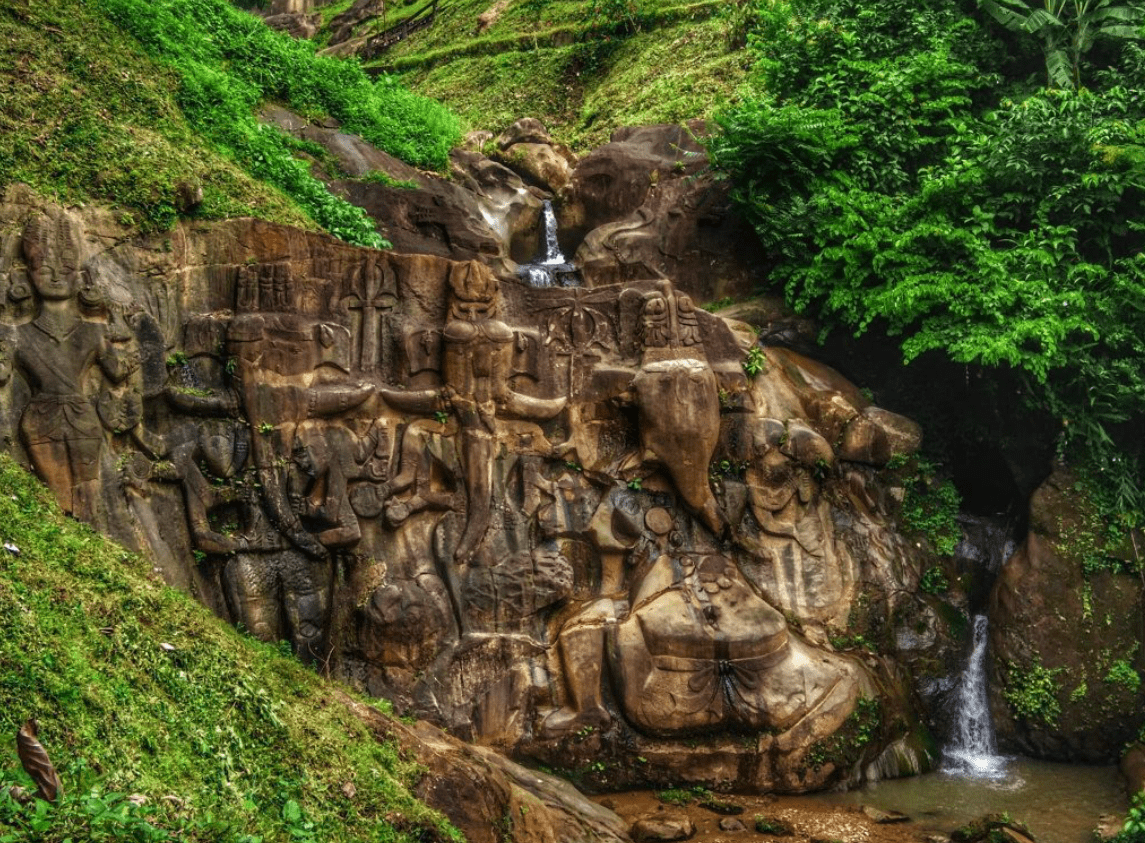India is a land of rich cultural heritage, with a history that dates back thousands of years. The country is home to a myriad of cultural heritage sites that showcase the diversity and beauty of its ancient civilization. From the iconic Taj Mahal to the ancient caves of Ajanta and Ellora, India’s cultural heritage sites are a testament to the country’s rich history and architectural marvels. These sites not only attract tourists from all over the world but also hold immense spiritual and historical significance for the people of India. As a result, they are carefully preserved and protected to ensure that future generations can continue to marvel at their beauty and learn from their historical and cultural significance.
India’s cultural heritage sites are a reflection of the country’s rich and diverse history, with influences from various civilizations and cultures. From the Mughal architecture of the Taj Mahal to the ancient rock-cut caves of Ajanta and Ellora, each site tells a unique story of India’s past. These sites are not only important for their historical significance but also for their architectural and artistic value. They showcase the incredible craftsmanship and artistic skills of the people who built them, leaving behind a legacy that continues to inspire awe and admiration. As such, India’s cultural heritage sites are not just tourist attractions but also important symbols of the country’s identity and cultural legacy.
Key Takeaways
- India is home to a rich cultural heritage with numerous UNESCO World Heritage Sites.
- The Taj Mahal is a symbol of love and an architectural marvel with intricate designs and beautiful gardens.
- Varanasi is one of the oldest living cities in the world and holds great spiritual significance for Hindus.
- The Ajanta and Ellora caves showcase ancient rock-cut architecture and stunning sculptures dating back to the 2nd century BCE.
- Jaipur’s Pink City is a vibrant hub of culture, with its colorful markets, palaces, and traditional Rajasthani architecture.
- The temples of Khajuraho are famous for their intricate carvings and sculptures depicting various aspects of life and spirituality.
- It is important to preserve and protect India’s cultural heritage sites for future generations to appreciate and learn from.
The Rich History and Architecture of the Taj Mahal
The Taj Mahal is perhaps India’s most iconic cultural heritage site, known for its breathtaking beauty and rich history. Built by Mughal Emperor Shah Jahan in memory of his beloved wife Mumtaz Mahal, the Taj Mahal is a masterpiece of Mughal architecture and a symbol of eternal love. The white marble mausoleum is adorned with intricate carvings, inlaid with precious stones, and surrounded by lush gardens, making it a sight to behold. The Taj Mahal’s architectural beauty is matched only by its historical significance, as it stands as a testament to the love and devotion of Shah Jahan to his wife.
The Taj Mahal’s architectural brilliance lies in its perfect symmetry and intricate detailing, which reflects the Mughal style of architecture. The use of white marble, intricate carvings, and inlaid gemstones showcases the exquisite craftsmanship of the Mughal artisans. The complex also includes a mosque, guest house, and formal gardens, all designed with meticulous attention to detail. The Taj Mahal’s architectural grandeur has earned it a place as one of the Seven Wonders of the World, attracting millions of visitors each year. Its historical and architectural significance has also led to its designation as a UNESCO World Heritage Site, ensuring its preservation for future generations to admire and appreciate.
The Spiritual Significance of Varanasi
Varanasi, also known as Kashi or Banaras, is one of the oldest living cities in the world and holds immense spiritual significance for Hindus. Situated on the banks of the sacred Ganges River, Varanasi is a place of pilgrimage and spiritual awakening for millions of devotees. The city is dotted with ancient temples, ghats (steps leading down to the river), and bustling markets, creating a vibrant tapestry of spirituality and culture. Varanasi is believed to be the abode of Lord Shiva, making it a revered destination for those seeking spiritual enlightenment and liberation from the cycle of birth and death.
The spiritual significance of Varanasi is deeply intertwined with its rich history and cultural heritage. The city’s ancient temples, such as the Kashi Vishwanath Temple and Sankat Mochan Hanuman Temple, are revered by devotees who come to seek blessings and perform religious rituals. The ghats along the Ganges River are also central to Varanasi’s spiritual identity, where devotees gather to perform sacred rituals, such as bathing in the holy waters and offering prayers to their ancestors. Varanasi’s spiritual significance extends beyond Hinduism, as it is also a place where people of all faiths come to seek solace and spiritual fulfillment. The city’s cultural heritage is deeply rooted in its spiritual traditions, making it a unique and sacred destination for those seeking a deeper connection with their inner selves.
Exploring the Ancient Caves of Ajanta and Ellora
| Location | Exploring the Ancient Caves of Ajanta and Ellora |
|---|---|
| Number of Caves | Ajanta: 30, Ellora: 34 |
| UNESCO World Heritage Site | Yes |
| Historical Period | Ajanta: 2nd century BCE to 480 CE, Ellora: 6th to 9th century CE |
| Religious Significance | Buddhist, Hindu, Jain |
| Architectural Style | Rock-cut caves |
The ancient caves of Ajanta and Ellora are a testament to India’s rich cultural heritage and architectural marvels. Located in the state of Maharashtra, these rock-cut caves date back to the 2nd century BCE and showcase exquisite Buddhist, Hindu, and Jain art and architecture. The Ajanta caves are renowned for their magnificent murals and sculptures that depict scenes from the life of Buddha and various Jataka tales. The Ellora caves, on the other hand, feature an impressive collection of rock-cut temples dedicated to Hindu, Jain, and Buddhist deities, showcasing the religious harmony that existed in ancient India.
The Ajanta and Ellora caves are not only important for their historical and religious significance but also for their architectural brilliance. The intricate carvings, detailed sculptures, and elaborate rock-cut architecture demonstrate the incredible craftsmanship of ancient Indian artisans. The caves also serve as a window into India’s rich artistic traditions, showcasing the evolution of art and architecture over several centuries. As UNESCO World Heritage Sites, the Ajanta and Ellora caves are carefully preserved and protected to ensure that future generations can continue to marvel at their beauty and learn from their historical and cultural significance.
Discovering the Vibrant Culture of Jaipur’s Pink City
Jaipur, the capital city of Rajasthan, is known for its vibrant culture, rich history, and architectural splendor. The city’s nickname, “Pink City,” comes from the distinctive pink color of its buildings, which were painted pink to welcome the Prince of Wales in 1876. Jaipur is home to several cultural heritage sites, including the majestic Amber Fort, City Palace, Hawa Mahal (Palace of Winds), and Jantar Mantar observatory. These architectural marvels showcase the grandeur and opulence of Rajasthan’s royal heritage, with intricate carvings, ornate facades, and sprawling courtyards that transport visitors back in time.
The vibrant culture of Jaipur is also reflected in its bustling bazaars, where artisans sell traditional handicrafts, textiles, jewelry, and pottery. The city’s rich cultural heritage is celebrated through colorful festivals, such as the Jaipur Literature Festival, Jaipur International Film Festival, and Teej festival, which showcase traditional music, dance, art, and cuisine. Jaipur’s cultural heritage sites are not just relics of the past but living testaments to the city’s enduring traditions and artistic legacy. As such, they are carefully preserved and promoted to ensure that Jaipur’s vibrant culture continues to thrive for generations to come.
The Magnificent Temples of Khajuraho

The temples of Khajuraho are a testament to India’s rich cultural heritage and architectural splendor. Located in the state of Madhya Pradesh, these ancient temples were built between 950 and 1050 CE by the Chandela dynasty. The temples are renowned for their exquisite carvings that depict various aspects of life, including gods and goddesses, celestial beings, animals, musicians, dancers, and erotic sculptures. The intricate artwork on the temple walls showcases the artistic prowess of ancient Indian artisans and provides insight into the social and religious life during that period.
The temples of Khajuraho are not only important for their architectural and artistic value but also for their religious significance. The site is home to both Hindu and Jain temples, each adorned with elaborate sculptures that reflect their respective religious beliefs. The temples’ architectural grandeur is matched only by their historical significance as they stand as a testament to India’s rich cultural legacy. As UNESCO World Heritage Sites, the temples of Khajuraho are carefully preserved and protected to ensure that future generations can continue to marvel at their beauty and learn from their historical and cultural significance.
Preserving India’s Cultural Heritage Sites for Future Generations
Preserving India’s cultural heritage sites is crucial for maintaining the country’s rich history and cultural legacy for future generations. These sites not only attract tourists from all over the world but also hold immense spiritual and historical significance for the people of India. As such, it is essential to implement effective conservation measures to protect these sites from environmental degradation, urbanization, tourism pressures, and other threats.
Conservation efforts should focus on maintaining the structural integrity of heritage sites while preserving their artistic and historical value. This can be achieved through regular maintenance, restoration projects, documentation of cultural artifacts, and community engagement initiatives. Additionally, promoting sustainable tourism practices can help minimize the impact on these sites while providing economic benefits to local communities.
Education also plays a crucial role in preserving India’s cultural heritage sites. By raising awareness about their historical significance and promoting cultural literacy among younger generations, we can ensure that these sites continue to be valued and protected for years to come.
In conclusion, India’s cultural heritage sites are a testament to the country’s rich history, architectural marvels, spiritual significance, vibrant culture, and artistic legacy. From the iconic Taj Mahal to the ancient caves of Ajanta and Ellora, these sites showcase the diversity and beauty of India’s ancient civilization. It is essential to preserve these sites for future generations so that they can continue to marvel at their beauty and learn from their historical and cultural significance. By implementing effective conservation measures and promoting cultural literacy, we can ensure that India’s cultural heritage sites continue to thrive for centuries to come.
FAQs
What are Indian heritage sites?
Indian heritage sites are historical, cultural, or natural landmarks that hold significant value in India’s history and are recognized for their importance by the government and international organizations.
How many heritage sites are there in India?
India has 38 UNESCO World Heritage Sites, which includes cultural, natural, and mixed properties. Additionally, there are numerous other heritage sites recognized by the Archaeological Survey of India and other organizations.
What are some famous Indian heritage sites?
Some famous Indian heritage sites include the Taj Mahal, Qutub Minar, Red Fort, Hampi, Ellora Caves, Khajuraho Group of Monuments, and the Western Ghats.
How are Indian heritage sites protected?
Indian heritage sites are protected and managed by various government bodies such as the Archaeological Survey of India, State Archaeology Departments, and other local authorities. Additionally, UNESCO World Heritage Sites are protected under international agreements.
Can tourists visit Indian heritage sites?
Yes, most Indian heritage sites are open to tourists and visitors. However, there may be restrictions on certain activities to ensure the preservation of these sites for future generations.

